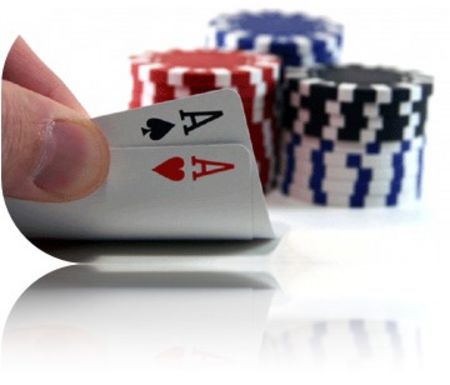High or Low Pair

With a pair on the flop, you really are holding top pair. There is not much difference
in strategy between holding AT with a QQT flop or AQ with a QTT flop, except that
the AT hand has more exposure to overcards. Please refer to the chapter "Top
Pair/Overpair" for strategies on how to play a pair when there is a pair on the flop.
Three-Suited
With a three-suited flop, your middle or bottom pair is almost worthless. Your
opponents could have a flush, set, two pair, a higher pair, or a strong flush draw
with overcards to your pair. You can only play your hand if you have a high flush
draw in addition to your pair (see \"Flush Draws\" chapter for strategies) or
sometimes as a semi-bluff against one or two opponents.
A bluff attempt with this kind of flop against three opponents is very risky, even
when they have all checked. If you are against two opponents and they both check,
a bet might win the pot. If you get check-raised, you should probably fold. If you
must act first against two opponents, usually just check and fold.
Even when you are heads up you should be inclined to fold to a bet unless you
have a flush draw also. In those cases where you might have the best hand, your
opponent still has a lot of outs that could beat you. On the other hand, if your
opponent checks, you should bet and probably fold to a check-raise. If you must act
first, you can bet out sometimes to see how your opponent reacts. Again, if he
raises, you probably ought to fold.
Three-Connected
Strategy with three-connected flops is very similar to three-suited flops, especially
when the three connected cards are medium or higher. You should almost always
check and fold against three or more opponents and follow the same strategies for
the three-suited flop against one or two opponents.
All High Cards
Generally you should not play middle or bottom pair when the flop has all high
cards. One exception is when you have a straight or flush draw. Even top pair is not
always a great hand with these types of flops, so middle or bottom pair is very
weak. Your opponents are just too likely to hold a better pair, two pair, or a straight.
There is also a good chance that your draws are counterfeited.
For example, when you hold AT and the flop is KJT, your hand is especially
vulnerable. An ace could give someone two better pair or a straight, so your only
outs may be the ten for trips or the queen for a straight, although you might have to
split the pot with the queen. A hand such as J9 is very weak, as a queen would give
an opponent a higher straight if they hold an ace. and a 9 would give an opponent a
straight if they hold a queen. You could be drawing to only two outs and possibly
are drawing dead. You need an exceptionally large pot to even consider playing
these hands. One exception is when you have an open-ended straight draw, such
as QJ, but you still might have to split the pot.
Against several opponents your best option is to check and fold middle or bottom
pair. The only time to consider betting is if you are against one or two opponents
and you think you might be able to win the pot by betting. If you are against two
opponents and they both check, you should probably go ahead and bet. If heads
up, usually bet if your opponent checks or bet out if acting first. When you are
playing heads up, aggression is usually best since your opponent could have a
variety of hands. For example, if the flop is KT9, your lone opponent could be
holding a middle pair such as 88 or a hand such as A7s. In these cases, you want
to go ahead and bet rather than give your opponent a chance to steal the pot or hit
a miracle card on the turn.
If you bet and an opponent raises, you should usually assume that your opponent
has a better hand as it takes a very aggressive player to bluff into these types of
flops. You should usually fold to a raise unless you have some type of straight draw
that might justify calling or the pot is large enough to justify calling with a weak
draw.
NEXT...Two-Suited

